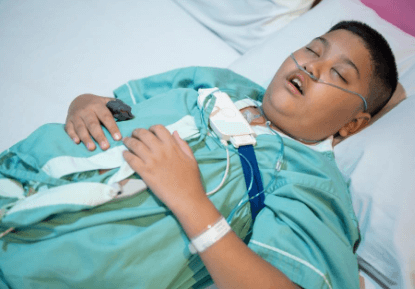
Child Sleep Apnea After Tonsillectomy
Child sleep apnea following a tonsillectomy is a complex issue that warrants careful consideration. Post-operative physiological changes can lead to airway obstruction, manifesting in symptoms such as excessive daytime sleepiness and irritability. These indicators often go unrecognized or misattributed, potentially complicating recovery and affecting a child’s overall well-being. Understanding the nuances of this condition is vital, particularly in the context of follow-up care. As we explore the intricacies of post-tonsillectomy sleep apnea, the implications for long-term health outcomes become increasingly significant. What might this mean for the child’s future?
Read also: Art:4hv22s6hiie= Lofi
Understanding Sleep Apnea
Sleep apnea is a prevalent sleep disorder characterized by repeated interruptions in breathing during sleep, significantly impacting a child’s overall health and well-being.
These disruptions can lead to altered sleep patterns, causing fatigue, behavioral issues, and cognitive impairments.
Understanding the relationship between breathing issues and sleep quality is crucial for parents seeking to improve their child’s health and foster a restful, rejuvenating sleep environment.

Causes of Post-Tonsillectomy Apnea
Post-tonsillectomy apnea can occur due to several physiological changes that may arise following the surgical removal of the tonsils.
These changes can lead to post-operative complications, including temporary airway obstruction as the surrounding tissues swell.
Additionally, alterations in muscle tone and respiratory control may contribute to breathing difficulties during sleep, necessitating careful monitoring and management to ensure the child’s safety and well-being.
Recognizing Symptoms in Children
Recognizing the symptoms of apnea in children after tonsillectomy is crucial for timely intervention and management.
Parents should utilize a symptom checklist, noting behavioral signs such as excessive daytime sleepiness, irritability, and difficulty concentrating.
Additionally, observe for signs of interrupted sleep patterns, including snoring or gasping during sleep.
Early identification can significantly enhance a child’s quality of life and overall health outcomes.
Importance of Follow-Up Care
Following a tonsillectomy, the importance of diligent follow-up care cannot be overstated, as it plays a critical role in monitoring a child’s recovery and identifying potential complications such as sleep apnea.
Effective post operative monitoring throughout the recovery timeline ensures timely intervention, alleviating concerns for parents and optimizing outcomes.
Regular assessments help to ensure that the child regains optimal health and well-being.
Read also: STD Test vs. HIV Test: A Comprehensive Guide
Conclusion
The journey of recovery after tonsillectomy resembles navigating a winding road, where unexpected turns may lead to unanticipated challenges such as sleep apnea. Just as a vigilant driver monitors the GPS for potential obstacles, diligent follow-up care is essential in identifying post-operative complications. Recognizing symptoms early, such as excessive daytime sleepiness and irritability, allows for timely interventions that can significantly enhance a child’s health and well-being, ensuring a smoother path toward recovery and improved quality of life.




